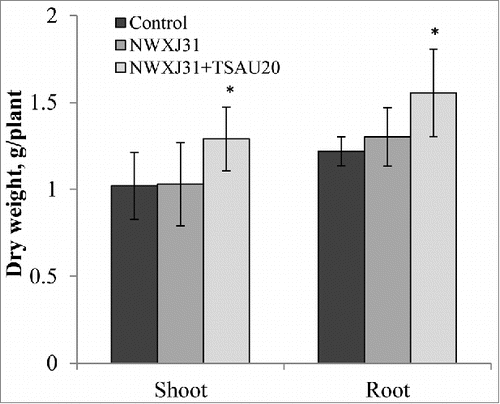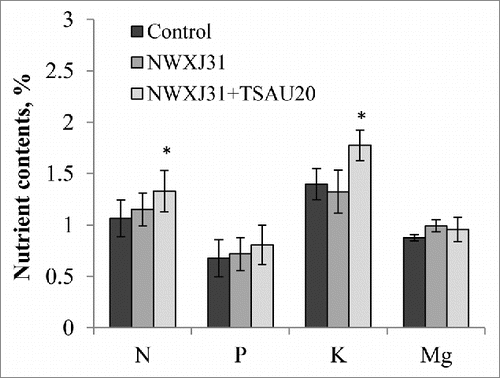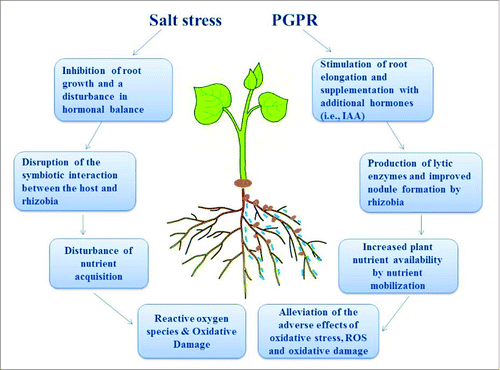Figures & data
Figure 1. Effect of P. extremorientalis TSAU20 and Mezorhizobium sp NWXJ31 inoculation on liquorice dry weight. Plants were grown under an open-field condition for 3 months in pots with saline soil. Columns represent the means of 4 plants (n = 5), with error bars showing standard deviation. Columns marked with an asterisk differed significantly from uninoculated plants at P < 0.05 (Student's t test).

Figure 2. Effect of P. extremorientalis TSAU20 and Mezorhizobium sp. NWXJ31 inoculation on nitrogen (N), phosphorus (P), potassium (K), and magnesium (Mg) contents in liquorice. Plants were grown in open-field conditions for 3 months in pots with saline soil. Columns represent the means of 4 plants (n = 5), with error bars showing standard deviation. Columns marked with an asterisk differed significantly from uninoculated plants at P < 0.05 (Student's t test).

Table 1. Effect of microbial inoculants on chlorophyll contents and hydrogen peroxide levels, as well as superoxide dismutase, peroxidase, glutathione reductase, and catalase activities in Glycyrrhiza uralensis. Values are shown as the mean ± SE (n = 5). Columns marked with an asterisk differed significantly from uninoculated plants at P < 0.05 (Student's t test).
Figure 3. Schematic illustration of the main effects of plant growth-promoting rhizobacteria (PGPR) on the growth and stress tolerance of plants. The root-colonizing PGPR strain stimulates root growth, nutrient uptake and nodule formation through supplying additional phytohormones, mobilizes minerals and alleviates the adverse effects of oxidative stress. IAA: indole-3 acetic acid, ROS: reactive oxygen species.

